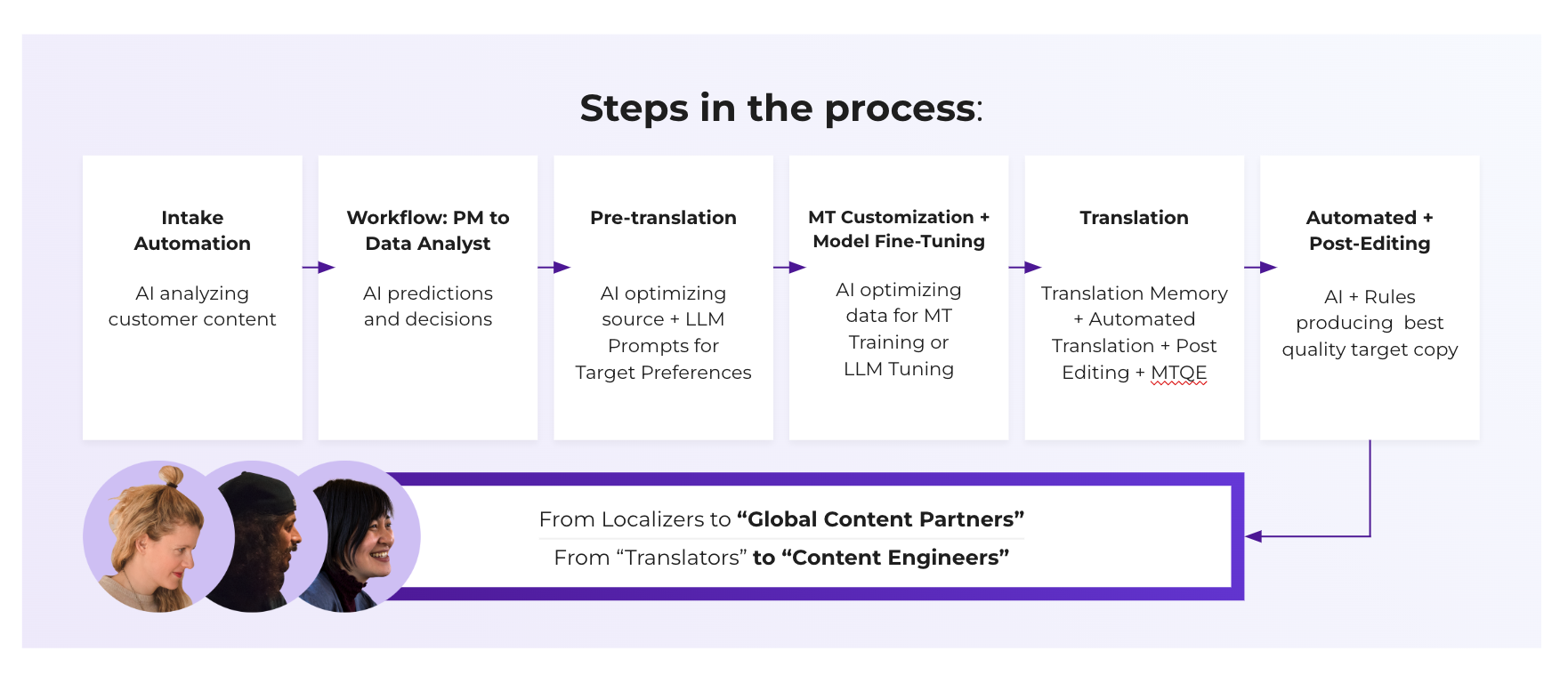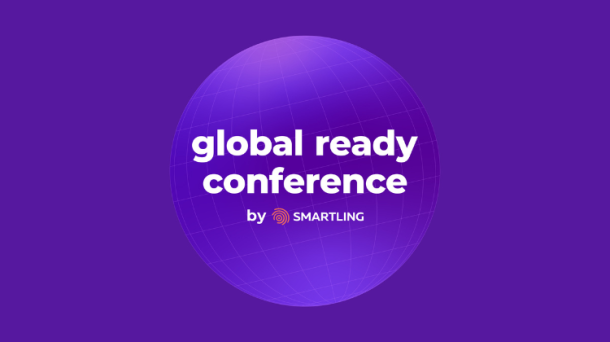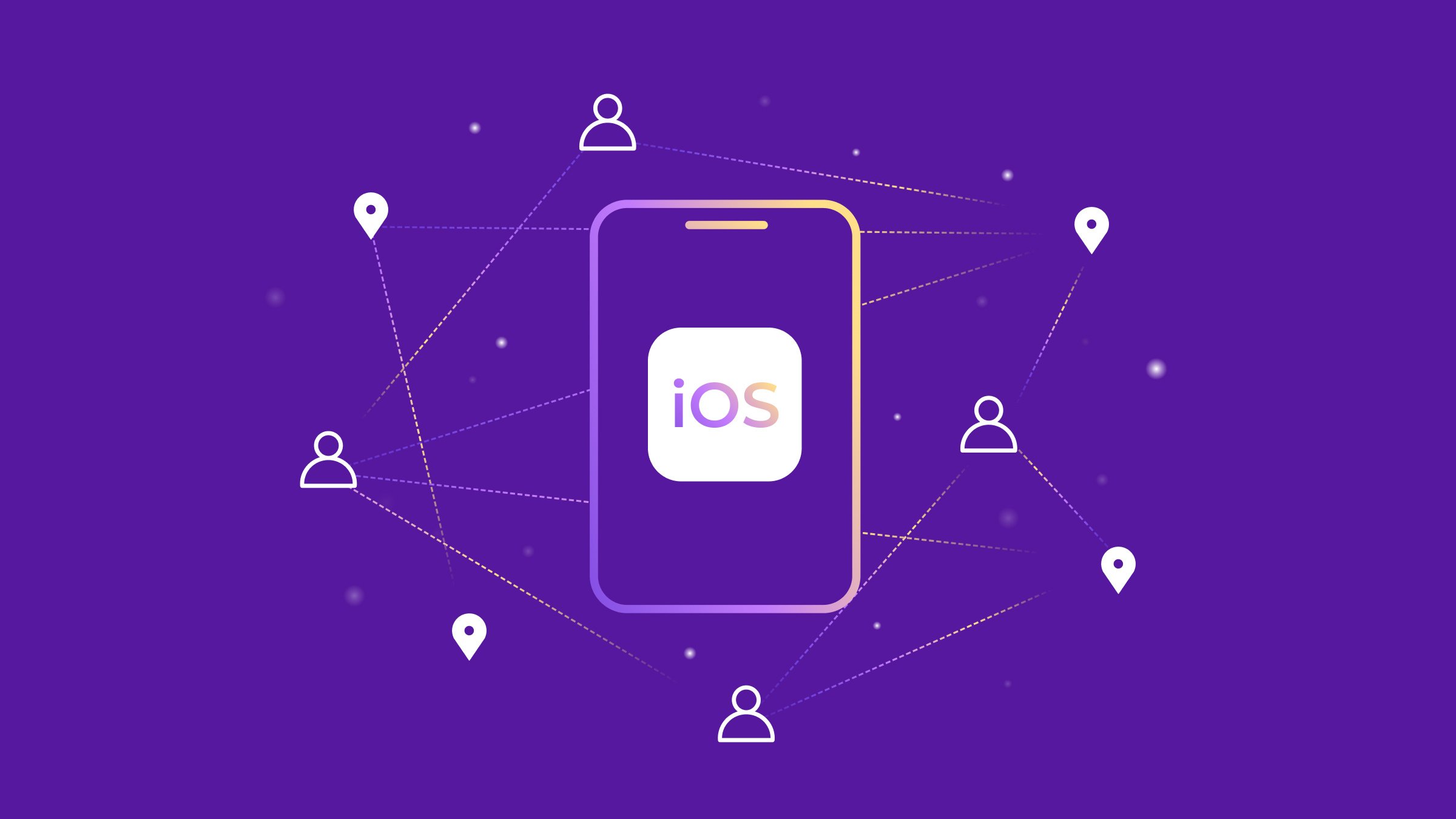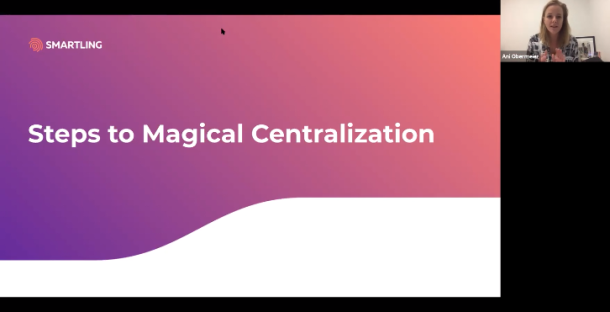1. Artificial Intelligence: It will usher in the biggest transformation since SaaS.
Smartling can help you harness AI to gain a competitive advantage.
An uncertain business environment is challenging to navigate, but it’s also when innovation has the best opportunity to flourish. When companies tighten their belts, their focus on doing more with less can lead to out-of-the-box approaches to problem-solving.
Add AI to the mix, and the potential is huge.
Smartling can help you harness that potential to gain a competitive advantage. Here are a few statistics that show how Smartling customers are leveraging technology to reduce existing costs, ensure translation quality, and accelerate time to market:
- Our wide range of connectors helps Smartling customers automate 90% of their workflows. Further, 50% of customers automate over 99% of their content.
- Smartling customers have increased their use of neural machine translation (NMT) by 238% annually from 2020 to 2022.
- The average customer translates 55% of their content with Smartling’s NMT hub.
- In the past 36 months, customers have used Smartling to reduce their translation costs per word by over 60% while improving quality.
2. Machine translation features prominently in the optimal translation mix.
Advances in NMT make it easier to do more with less.
Economic uncertainty has prompted many companies, including SAS and Vimeo, to focus on efficiency. With AI-powered NMT improving by leaps and bounds each day, localization teams have an incredible tool at their disposal.
The use of NMT is not new for either SAS or Vimeo: their translation efforts have incorporated the technology for the last several years. Previously, it was part of a machine translation, post-editing (MTPE) workflow, where editors — and sometimes in-country reviewers afterward — reviewed the output and made necessary edits.
Today, both companies are working to identify which content types would be good candidates to move from a human-only workflow to an MTPE one — and where it would make sense to use an NMT-only workflow. Finding efficiencies without affecting quality is still a priority, of course. So there is a lot of excitement around the ability to leverage MT engines trained on their brand assets and translation memory (TM).
For more on determining your optimal translation mix, watch: Discovering your optimal translation mix with Vimeo and SAS.
3. Operationalization is critical for scaling your localization efforts.
DocuSign and Pinterest’s localization teams deliver high output yet have a small footprint.
A company’s localization efforts can have a huge impact on the company’s bottom line and business key performance indicators (KPIs). But even large companies often rely on small teams to design and execute their localization strategy.
So how can localization teams do more — and have that outsized impact — with less?
For DocuSign and Pinterest, a focus on operationalization has been key. And that starts with:
Centralization: First, centralize responsibility for localization within one team. And clearly define each team member’s role and responsibilities. Second, centralize all localization operations within one powerful TMS like Smartling.
Integration: Integrate as many content ecosystems as you can with your TMS. Leverage connectors to send content for translation directly from the programs you use daily.
Automation: Automate as much as possible. Eliminating manual processes will accelerate your time-to-market and reduce your costs.
For more tips, watch: How DocuSign and Pinterest successfully execute localization efforts on a large scale.
4. LanguageAI: Leveraging AI will help you work smarter, not harder.
Incorporate LanguageAI into every step of the translation process.
Generative AI, or technology that can produce text, imagery, audio, and synthetic data, is transforming how the language industry approaches translation. Exactly how this technology will impact the day-to-day lives of those in the industry is still a question mark. But that uncertainty presents opportunities.
Using AI strategically — and on every step of the translation process — will help companies produce high-quality translations at the highest speed and the lowest cost.
 LanguageAI on every step
LanguageAI on every step
But that is not meant to replace human expertise. Ultimately, Smartling embraces the idea of:
AI + Humans in the Loop
AI does the heavy lifting, but linguists are the spotters — they are the experts who monitor for proper tone and voice and step in only when needed.
For more on Smartling’s LanguageAI and how AI will upend the translation industry, watch: What is LanguageAI?
5. Localization ROI: Turn the spotlight on how much you’re saving.
Revenue growth only tells part of the story.
When done right, localizing your content will help you expand your market share and increase profits. However, examining your localization program’s success only through the lens of revenue growth gives you an incomplete picture of your ROI. Investing in a translation management system like Smartling allows companies to realize significant cost savings too.
Here are two of the many ways Smartling helps increase your savings:
Translation memories allow for easy access to previous translations.
- New strings that perfectly match strings in your translation memory can skip workflow steps, and there is no associated cost or wait time.
- Strings similar to ones in the translation memory are assigned a fuzzy match score based on similarity.
- The higher the fuzzy score, the less time the translator must spend on translation, resulting in cost and time savings while ensuring consistency.
Automation streamlines the process and improves the allocation of resources.
- Instead of spending hours copying and pasting strings into spreadsheets, content is automatically ingested, parsed, and sent to the appropriate workflow for translation.
- The translations are completed in a centralized environment, eliminating versioning issues, and are delivered in the same format as the source.
- Project managers, developers, and localization engineers can be hands-off while Smartling handles the thousands of files sent for translation, freeing them up to focus on higher-level work.
For more on calculating localization ROI, watch: Understanding how to measure localization ROI.

.jpg)





